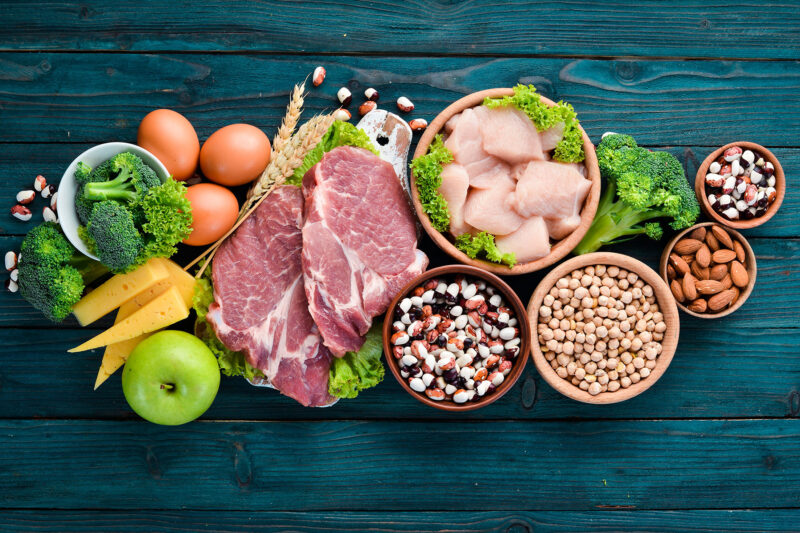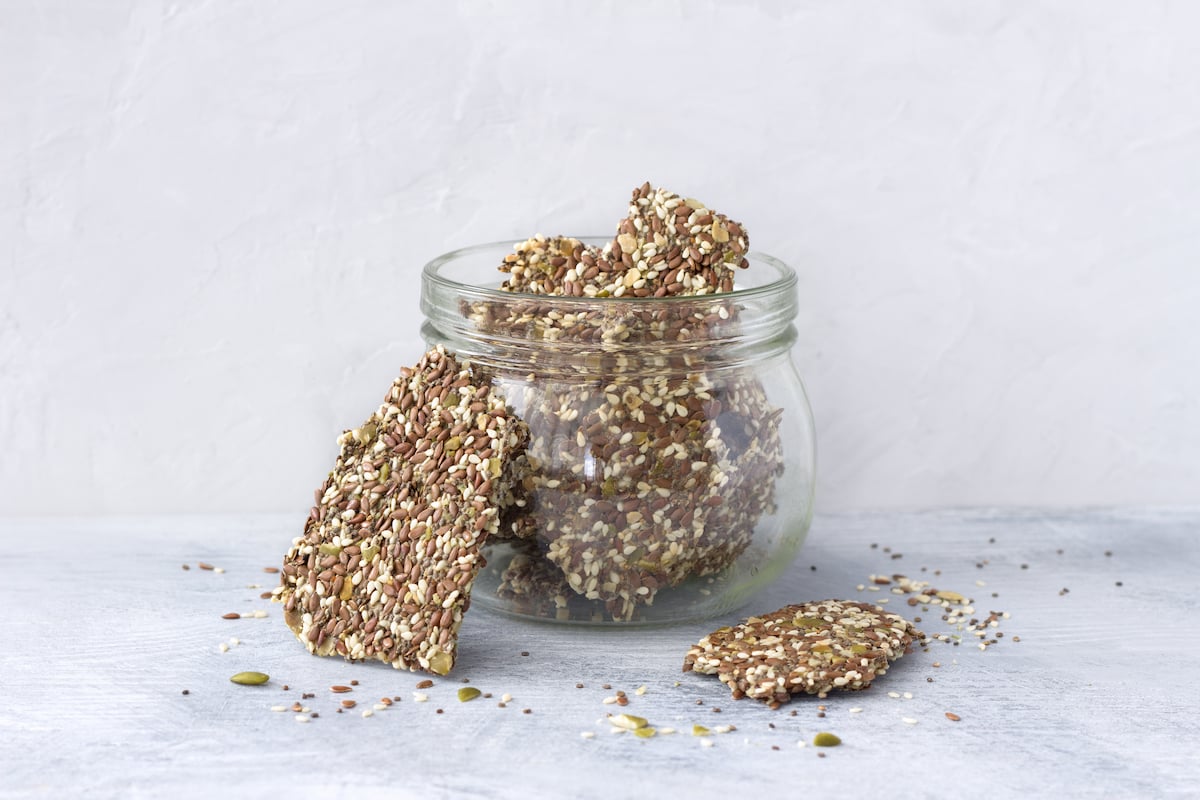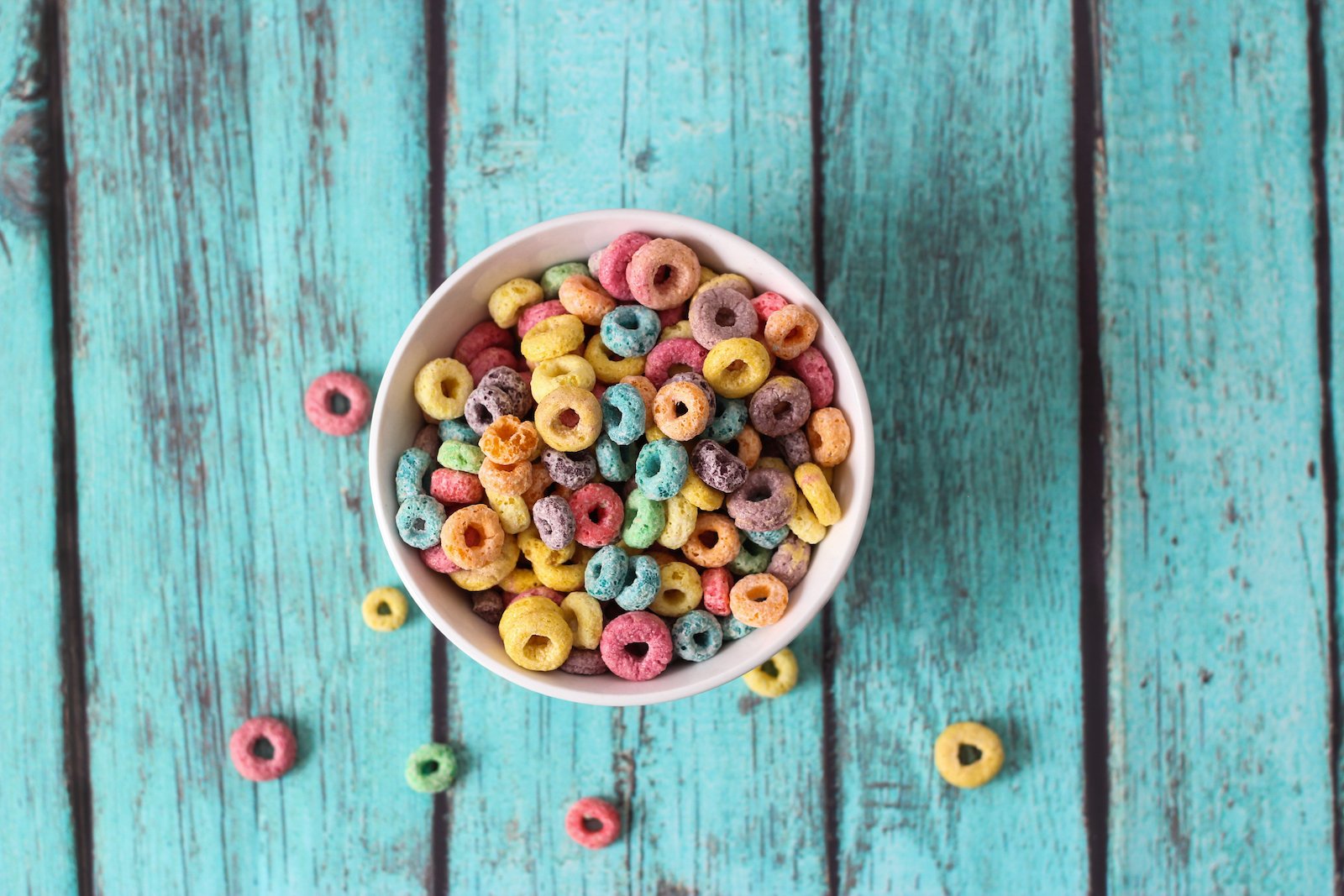You know you need protein. This macronutrient provides the building blocks for just about every structure and tissue in the body, including bone, hair, nails, the gut, and skeletal muscle. It’s also satiating, may aid weight loss, supports hormone production and immune health, and is a crucial component of blood sugar-stabilizing meals. But how much protein to eat is another question. Some older research suggests long-term diets rich in animal protein are associated with health problems, from bone disorders to kidney dysfunction to coronary artery disease, while newer research appears to dispel some of this worry. In fact, many metabolic health experts believe the optimal daily dose of protein may be higher (sometimes significantly so) than the recommended dietary allowance (RDA) of 0.8 g/kg, particularly for active people and older adults. So hitting your daily quota may require extra attention.
Below, we cover key metabolic perks of protein, how much to shoot for daily (and at each meal), significant differences between animal and plant sources, and how to get enough.
Why Protein Matters for Metabolic Health
Dietary protein comprises smaller molecules called amino acids attached in long chains. Your body needs 20 amino acids to function. Eleven are non-essential (your body makes them), and nine are essential (you must obtain them from food).
When you eat protein, it’s broken down into individual amino acids, which are then absorbed into your circulation via the small intestines. These amino acids are the “building blocks” of protein—they are used to make new proteins within the body that help build and repair every type of cell and tissue, make hormones and enzymes, form antibodies, and so much more.
A key role of dietary protein is forming skeletal muscle, which is crucial for metabolic health. Skeletal muscle is constantly being broken down and built up, and consuming a protein-rich meal enhances a process called muscle protein synthesis (MPS). That is when amino acids are incorporated into bound muscle protein to create new muscle tissue. Remember: While protein alone can help preserve muscle mass, exercise (particularly resistance training) is needed to enhance MPS further and promote muscle growth.
A higher percentage of muscle mass is great for blood glucose control since muscle essentially soaks up glucose from the bloodstream, using it for energy or storing it as glycogen. Depending on the circumstance, muscle can absorb glucose with or without insulin, the hormone that helps glucose enter cells. In one study, for every 10-percent increase in skeletal muscle mass, there was an 11% reduction in insulin resistance (indicating improved insulin sensitivity) and a 12% reduced risk of pre-diabetes. Without enough protein and physical activity, however, the rate of muscle protein breakdown (MPB) could outpace MPS, leading to muscle loss and, as a result, issues such as insulin resistance, increased inflammation, and metabolic syndrome.
More lean muscle also results in a higher metabolic rate—the rate at which you burn calories— which could support a healthy weight. “Even at rest, a muscle cell has a metabolic rate that’s about five to 10 times higher than that of a fat cell,” says metabolic health expert and Levels advisor Ben Bikman, PhD. “Once you start moving, that rate increases even more, and suddenly it’s 50 to 100 times higher.”
Protein supports metabolic health in several other ways.
Eating protein as part of a carbohydrate-containing meal stimulates the release of the hormone cholecystokinin (CCK), which helps slow digestion and the rate glucose is absorbed into the bloodstream. Protein also stimulates the release of insulin, which helps clear glucose from the bloodstream. Together, these two factors can help curb post-meal spikes in blood sugar.
(It’s worth noting here that there is nuance to the relationship between protein and insulin. As the authors of the above study note, the long-term effects of this protein-induced insulin stimulation are unclear. There are studies showing high protein intake may worsen insulin sensitivity over time, though protein source appears to matter, and there are many confounding factors. Meanwhile, other studies show improved insulin sensitivity from long-term high-protein diets. More research is needed, but overall, moderate protein increase from quality sources in the absence of existing metabolic dysfunction is likely beneficial.)
Additionally, while some amino acids can be converted to glucose via a process called gluconeogenesis, research suggests this isn’t enough to contribute to a significant rise in blood sugar. Per one study, most amino acids have a blood glucose-buffering effect when ingested along with a source of carbohydrates. Making a moderate shift in macros by increasing protein and fat intake and decreasing carbs was also shown to lower HbA1c (a marker of average blood glucose over the past three months) and liver fat content among people with Type 2 diabetes in a six-week study.
 Want to learn how more protein affects your metabolic health?
Want to learn how more protein affects your metabolic health?
Levels, the health tech company behind this blog, can help you improve your metabolic health by showing how dietary changes—like increasing your protein intake—and lifestyle impact your blood sugar. Get access to the most advanced continuous glucose monitors (CGM), along with an app that offers personalized guidance so you can build healthy, sustainable habits. Click here to learn more about Levels.
How Much Protein Do I Need?
Among experts, there are many different takes on the “ideal” amount of protein to eat per day. Still, one thing is pretty clear: The current RDA of 0.8 grams of protein per kg of body weight per day (g/kg/day), or about 54 g per day for a 150-pound adult, should be viewed as a baseline, not an optimal amount. “This is the minimum you need [to eat] to keep from getting sick, not necessarily what you’re supposed to eat every day,” says Jennifer McDaniel, MS, RDN, CSSD, LD, a registered dietitian and board-certified specialist in sports dietetics.
The RDA is based on the typical amount of protein needed to maintain nitrogen balance for the average sedentary adult. Nitrogen balance represents a balance between muscle protein breakdown and synthesis, while positive nitrogen balance is necessary for muscle growth, and negative nitrogen balance means muscle is being broken down and used for energy faster than your body can replace it.
Exceeding the RDA may be needed to avoid negative nitrogen balance in a variety of instances, such as when recovering from surgery or burns, when on a low-calorie diet, if you have cancer, or even if you’re under a lot of physical or emotional stress (interestingly, hormones released during stress, like cortisol, increase muscle protein breakdown). Additionally, MPS slows with age, so more protein is needed to optimally trigger this process and maintain and build muscle compared to younger adults.
Here’s what the research and experts say about protein intake for specific populations:
- Physically active adults: Several organizations suggest somewhere between 1.2 to 2.0 g/kg/day for physically active adults (82 to 136 g for a 150-pound person). Other research suggests 1.0, 1.3, and 1.6 g/kg/day for minimal, moderate, and intense physical activity levels, respectively.
- People trying to lose weight: Reducing calorie intake, whether via a traditional diet or intermittent fasting, can contribute to a catabolic state that reduces lean muscle mass. But several short-term studies suggest that 1.2 to 1.6 g/kg/day may support weight and fat loss and help preserve lean muscle.
- Older adults: The rate of muscle loss increases around age 40, potentially leading to sarcopenia (severe age-related muscle loss) if you don’t stay physically active and eat enough protein. One review suggests older adults benefit from eating 1.2 to 1.6 g/kg/day.
- What metabolic health experts say: To promote metabolic health for most adults, holistic nutritionist Kelly LeVeque generally recommends 0.75 g of protein per pound of body weight per day (or just over 1.6 g/kg/day), which is 113 g for a 150-pound person. Meanwhile, Peter Attia, MD, recommends as much as 2g/kg/day for his patients.
As important as your total protein intake is, how you distribute it throughout the day is just as important. A large body of research suggests that muscle protein synthesis is maximized with an intake of 20 to 25 g per meal of a high-quality, fast-digesting protein such as whey protein. According to McDaniel, closer to 30 g per meal may be ideal for mixed-macronutrient meals containing slower-acting protein sources. Striving for more than this isn’t necessary—a study found that consuming a meal with 30 g or 90 g of protein triggered MPS similarly.
Your body can’t store the amino acids from protein for later use, so anything you eat beyond what your body needs must be appropriately processed. For example, the oxidation of leftover amino acids produces ammonia, which is converted to urea by liver enzymes and removed from the body via urine. There is a chance that excessively high protein intake may exceed the body’s ability to safely detoxify ammonia and increase the body’s acidic load, which may contribute to health problems (the most often cited risks are kidney damage, bone loss, and dehydration).
However, these risks appear to be very low for healthy people. Even protein intake up to 2.5 g/kg/day doesn’t negatively impact kidney function, and dietary acid load is not related to bone density among adults who get enough calcium. That said, if you know you have a protein metabolism disorder or liver or kidney issues, you may need to consume less protein, and it’s worth consulting with a registered dietitian, McDaniel says.
Additionally, if energy demands are low (i.e., you’re not active enough), your body may convert excess protein to glucose via gluconeogenesis and potentially store it as fat.
Animal vs. Plant-Based Proteins
The quality of a protein depends on two key factors:
- The types and proportions of amino acids present
- The digestibility of the protein source
Animal-based proteins such as meat, fish, eggs, dairy, and animal-derived protein powders are considered high quality since all (except gelatin and collagen) are “complete” proteins—meaning they contain all nine essential amino acids in sufficient quantities to support biological processes such as muscle protein synthesis. Animal proteins are also highly digestible (around 90 to 99 percent), with their amino acids being easily absorbed.
On the other hand, plant proteins such as beans, lentils, nuts, and seeds are often considered low quality because many are incomplete—meaning they have too little of one or more essential amino acids (exceptions: soy and hemp, which are both complete). However, eating a variety of protein-containing plant foods throughout the day should provide sufficient quantities of essential amino acids to reap the benefits of protein—you don’t have to get them all in a single meal. (An exception? To optimize muscle protein synthesis after a workout, McDaniel says, “it might be beneficial to choose [foods] with a complete protein profile and the amino acid leucine,” which is well known for repairing and rebuilding muscle.)
Plant proteins also tend to have lower digestibility due to the presence of fiber and other plant compounds like phytic acid, so fewer amino acids end up being absorbed by the body compared to an equal amount of animal protein—potentially up to 10 percent fewer. Depending on the plant food, you may also need to eat a lot compared to animal sources. For example, 3 ounces of chicken has 26 grams of protein, but you’d need to eat almost two cups of black beans to get that, which comes with a lot of carbs. Aim to find options like tofu and hemp seeds (and even certain plant-based protein powders), which are good low-carb, high-protein options.
Related article:
How to Get Enough Protein
1. Have adequate protein at every meal
To reap the maximum benefits of protein, you want to divide intake pretty evenly among your meals—but many people struggle to hit that 20 to 30 g mark, especially at breakfast, which often contains the least protein. Here are some protein-rich ways to start your morning:
- Egg, cheese, and veggie scramble: Three large eggs contain 18 g of protein, an ounce of cheddar cheese has 6.5 g, and non-starchy veggies like broccoli contain small amounts (around 1 g per half cup) for a total of about 26 g of protein.
- Greek yogurt or cottage cheese with nuts + berries: Low-fat (2%) Greek yogurt has 15 g protein (in a 5.3 oz cup), and low-fat cottage cheese has 23.5 g of protein per cup. Add an ounce or ¼ cup of almonds (6 g) and a half cup of berries (0.5 g) for a total of 21–30 g of protein.
- Tofu scrambles and stir-fries: For an entirely plant-based take on scrambled eggs, try this tofu scramble recipe, which contains 24 g of protein, made with firm block tofu. For lunch or dinner, try adding cubed or crumbled tofu to stir-fries.
- Chia seed pudding with nut butter: Chia pudding made with almond milk and some berries contains around 7-8 g of protein (good for a snack). But when you make chia pudding with protein powder, each serving can have 19 g. Top it off with a tablespoon of almond butter for around 22 to 23 g of protein.
- Grain-free “oatmeal”: For a protein-rich oatmeal alternative, try this warm Chia, Flax, and Hemp pudding recipe with a scoop of protein powder, which makes a serving with around 48 g protein.
- Silken tofu smoothie: This chocolate smoothie uses ingredients like soy milk, cocoa powder, almond butter, vanilla extract, and silken tofu, which creates a thick, creamy texture and provides the bulk of this recipe’s 22 g of protein. (Omit the maple syrup, or try some liquid stevia to add sweetener.)
- Protein pancakes: Blend your favorite grain-free pancake batter (like Simple Mills or Birch Benders) with cottage cheese for a short stack that will keep you satiated. Follow these basic instructions to get the ratios right. You can use protein powder, too.
2. Eat protein-rich snacks
You don’t need to hit a specific protein target with snacks but include protein (ideally along with some fat and fiber) to promote satiety and blood sugar balance. Great options include:
- Hardboiled eggs (6 g protein each)
- Meat snacks like Epic Provisions Venison Sea Salt, Pepper Bars (12 g protein), Nick’s Sticks Beef Snack Sticks (10 g protein), Think Jerky Original Turkey Sticks (8 g protein)
- Salmon jerky from brands like Epic Provisions (7 g protein)
- Crunchy roasted edamame (14 g protein per ⅓ cup), chickpeas (6 g protein per ¼ cup), or fava beans (7 g protein per ¼ cup). Try adding these to a trail mix.
- Peanuts (7 g per ¼ cup), almonds (6 g per ¼ cup), and pistachios (6 g per ¼ cup) are a bit higher in protein than other nuts.
- Apple slices with whipped cottage cheese dip: Blend up or food-process cottage cheese with a bit of cinnamon. A quarter cup has about 6 g of protein.
- Veggie slices or seed crackers with a savory whipped cottage cheese dip (cottage cheese, onion and garlic powder, dill, salt, pepper).
3. Sprinkle on some extra protein
If your meal or snack needs more protein, try sprinkling on more. Hemp seeds are especially high in protein at 9.5 g per three tablespoons, nuts add 5 to 7 g per quarter cup, and three tablespoons of nutritional yeast have 8 g.
4. Use protein powders to help fill the gaps
Animal and plant-based protein powders contain anywhere from 5 to 25 g of protein per scoop. The most obvious way to use them is in a smoothie or a pre- or post-workout shake, but consider adding them to chia pudding, grain-free breakfast porridge recipes, pancakes, and other low-carb baked goods. Keep in mind: Protein powder is not a one-to-one replacement for flour—at most, replace ⅓ of the flour in a baked good recipe for protein powder.

 Want to learn how more protein affects your metabolic health?
Want to learn how more protein affects your metabolic health?







